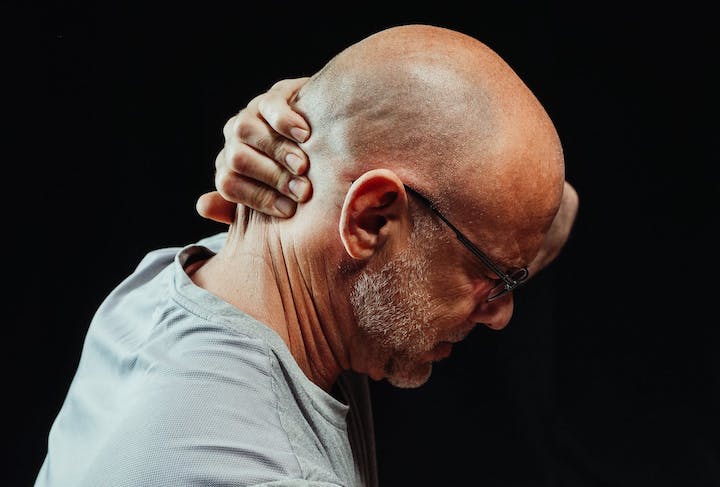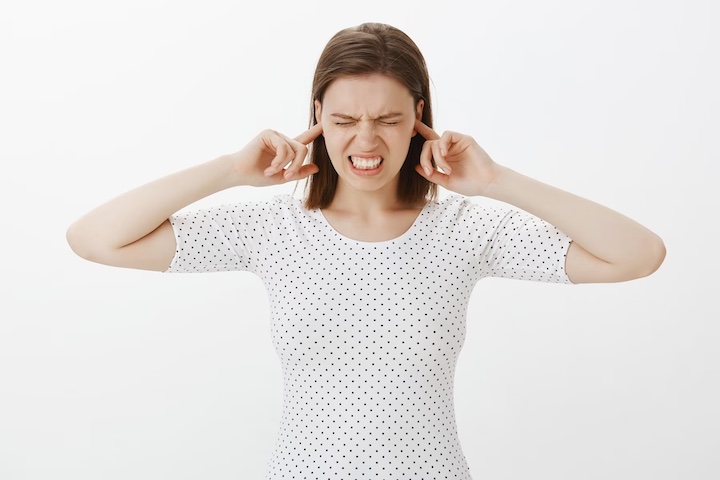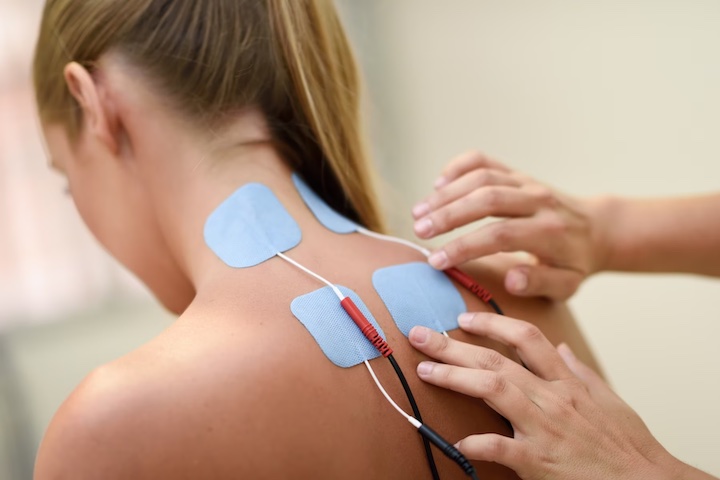Cervicogenic vertigo and dizziness are complex conditions that can cause considerable disruption to an individual’s daily life and activities. It is typically the result of head and neck surgery, trauma or vestibular rehabilitation.
Symptoms include imbalance, vertigo, lightheadedness and dizziness. Complications, such as impaired mobility or difficulty concentrating due to ongoing dizzy spells, may arise if left untreated. Treatment options are varied but often involve vestibular rehabilitation exercises to correct balance problems and reduce symptoms.
Cervicogenic Vertigo is a condition associated with neck pain, vertigo, headaches, imbalance and visual disturbances. It is important to note that the symptoms of Cervicogenic Vertigo can vary from person to person and may be experienced in varying degrees.
Generally speaking, it is characterized by episodes of vertigo or dizziness which are triggered by certain neck movements or postures as well as a feeling of imbalance and unsteadiness when walking. Additionally, headaches and visual disturbances such as blurred vision may also occur.
Neck pain is a common symptom associated with cervical vertigo and dizziness. It can present as an episode of vertigo or as ongoing pain, which can be triggered by specific head or neck movements. Balance and hearing loss can also occur during an attack of vertigo, along with other symptoms such as nausea and vomiting.
 Photo Credit: Kindel Media, Pexels
Photo Credit: Kindel Media, Pexels
The underlying cause of these episodes remains unknown, but it is believed that misalignment of the cervical vertebrae may play a role in causing vertigo attacks. Innovative treatments have been developed to help reduce occurrences of vertigo episodes and improve patient outcomes.
Balance disturbances can cause a sensation of unsteadiness, often accompanied by nausea and vomiting, which is often referred to as vertigo.
Cervicogenic vertigo is caused by an issue in the neck, such as misalignment or trauma. Common symptoms include hearing loss, tinnitus, disequilibrium, and dizziness. The vestibular system maintains balance and equilibrium; any disruption may lead to vertigo-like symptoms.
Physicians diagnose cervicogenic vertigo through physical exams and imaging tests. Treatment focuses on correcting alignment issues in the neck with manual therapy techniques and exercises to improve cervical stability.
Headaches are a common symptom that various underlying conditions can cause. Cervicogenic vertigo & dizziness is one of them, as the inner ear and hearing test can affect balance and lead to deafness or vertigo symptoms.
Treatment often involves physical therapy to address the misalignment of neck muscles which may have caused the headache in the first place.
The misalignment of neck muscles can lead to instability and difficulty with coordination. Hearing and balance are affected, leading to vertigo, nausea, and blurred vision.
 Photo Credit: Diana Grytsku
Photo Credit: Diana Grytsku
The National Institute on Deafness defines the condition as Ménières disease. It can occur in response to changes in head position or pressure within the inner ear. Treatment focuses on relieving symptoms through medications, lifestyle adjustments, and physical therapy exercises that target muscle imbalances.
Visual disturbances associated with cervical vertigo and dizziness can range from blurred to double vision.
Endolymphatic sac dysfunction is a common cause of visual disturbances due to abnormal fluid in the inner ear. This can lead to symptoms of vertigo, deafness, and other communication disorders, as well as ringing in the ears.
Diagnosis and treatment must be tailored according to individual patient needs for long-term management.
Neck stiffness is a common symptom of Cervicogenic vertigo and dizziness. It may be caused by injury, inflammation, or disease. Surgery may be necessary to repair any damage to the neck structures causing your symptoms.
Causes of your symptoms may also include Ménière’s disease, a disorder of the inner ear usually resulting in episodes of dizziness and ringing in the ears. Treatment for Cervicogenic vertigo and dizziness should focus on reducing neck stiffness, as this can alleviate many of the associated symptoms.
Cervicogenic vertigo and dizziness can be caused by a variety of factors such as neck injuries, cervical spine disorders, poor posture, repetitive strain or muscle imbalances. Neck injuries due to trauma are the most common cause of the conditions.
 Photo Credit: Yanalya
Photo Credit: Yanalya
Cervical spine disorders can also cause this type of vertigo, including degenerative disc disease or spinal stenosis. Poor posture can lead to tension in the neck muscles, leading to cervicogenic vertigo and dizziness.
Repetitive strain is another cause which includes activities that require frequent bending of the head forward like prolonged computer use or reading. Finally, muscle imbalances between the neck muscles can also contribute to cervicogenic vertigo and dizziness.
Studies have shown that injuries to the neck, such as whiplash or cervical sprain/strain, can lead to an increased risk of developing cervicogenic vertigo and dizziness. Symptoms may include a spinning sensation, imbalance and unsteady gait, hearing problems in the middle ear, nausea, and difficulty concentrating.
Although the exact cause of this disease is unknown, recent research has suggested that neck injuries play a significant role in its development. Therefore, prevention strategies such as proper posture maintenance may be beneficial for reducing the risk of experiencing such symptoms.
Cervical spine disorders can manifest as a range of physical symptoms, from mild discomfort to severe pain. Such conditions may affect the inner ear and worsen vertigo or dizziness.
 Photo Credit: Cookie Studio
Photo Credit: Cookie Studio
Symptoms such as hearing loss may point to Ménière’s disease, which may require surgery for treatment. Ménière’s is a rare disease with many symptoms that can be difficult to diagnose.
Therefore, correctly managing cervical spine disorders is essential for reducing the risk of further complications and minimising vertigo or dizziness symptoms.
Poor posture can contribute to the development of cervical spine disorders, as it may lead to misalignment and resulting musculoskeletal pain. This can cause:
Testing for Meniere’s is essential to diagnose its underlying cause. Understanding posture and its effects on the cervical spine is key to avoiding symptoms such as dizziness and vertigo.
Repetitive strain is a common cause of cervicogenic vertigo and dizziness. Fluid in the inner ear can be affected by neck movement, resulting in pressure on the inner ear that may induce vertigo.
Signs and symptoms include light-headedness, unsteadiness and blurred vision, with surgery sometimes being considered to treat severe cases that don’t respond to other forms of treatment such as Ménière’s disease.
Muscle imbalances in the neck can contribute to changes in fluid balance, resulting in various symptoms related to vertigo and dizziness. Neck muscles may become overstretched, weak, or tight, worsening existing symptoms. These imbalances could cause further disruption of the vestibular system and lead to increased episodes of dizziness.
To help ease symptoms, muscle imbalance needs to be addressed and managed properly by an experienced professional. Treatments such as physical therapy, exercise therapy, postural re-education, and manual therapies may be necessary to experience relief from symptoms associated with cervicogenic vertigo & dizziness.
Cervicogenic vertigo and dizziness can be effectively treated with various medications, lifestyle modifications, physiotherapy, posture correction, and ergonomics as well as addressing any contributing factors.
Medications used to treat cervicogenic vertigo and dizziness include antiemetics to reduce nausea and improve comfort, vestibular suppressants such as benzodiazepines to reduce symptoms of dizziness or imbalance, anticholinergics to help with motion sickness, anxiolytics for anxiety associated with vertigo, and antidepressants if depression is present.
Lifestyle modifications may involve reducing stress levels by engaging in relaxation techniques like yoga or meditation.
 Photo Credit: Karolina Grabowska, Pexels
Photo Credit: Karolina Grabowska, Pexels
Physiotherapy may include strengthening exercises for the neck muscles, balance training programs for improving coordination, and proprioceptive activities like tai chi or Pilates.
Posture correction and ergonomics can also improve discomfort associated with vertigo.
Addressing any contributing factors such as poor vision may also help reduce symptoms of cervicogenic vertigo and dizziness.
Medications are often used to help reduce the symptoms of cervicogenic vertigo and dizziness. These include:
These medications can be effective in reducing the risk of hearing loss and other symptoms of Meniere’s disease. They can also provide relief from the main symptoms that cause vertigo and dizziness.
Lifestyle changes and modifications may benefit those suffering from balance problems, nausea, and vomiting.
Ménière’s disease is responsible for hearing and balance disturbances that can cause severe vertigo attacks. Treatments for Ménière’s disease may include lifestyle modifications such as stress reduction techniques, reduced caffeine intake, avoidance of certain medications, or elimination of trigger factors to help reduce the severity or frequency of attacks.
Following a low-sodium diet may also help diagnose Ménière’s disease in some cases. By adhering to these strategies, symptoms associated with Ménière’s disease can be effectively managed.
Physiotherapy is an important component of treatment for balance problems, nausea, and vomiting caused by Ménières disease. It can help to:
Ménière’s disease often presents symptoms similar to other conditions, so it must be accurately diagnosed before any physiotherapy intervention occurs. Physiotherapists are responsible for assessing and treating balance and hearing issues that can affect balance and hearing due to Ménière’s disease to improve movement, reduce pain, restore function, and increase independence in activities of daily living.
Correcting posture and implementing ergonomic principles can be an effective way to reduce symptoms associated with Ménières disease. The disease can affect one’s balance, hearing and vision, and symptoms may improve when a person is in the correct position.
 Photo Credit: Freepik
Photo Credit: Freepik
Ménières disease is an inner ear disorder responsible for hearing loss, tinnitus, and vertigo. Ergonomics helps to ensure that people are in comfortable positions where such conditions usually won’t worsen. This approach helps improve quality of life while minimising any disruption caused by the condition.
It is important to assess any contributing factors that may exacerbate Ménière’s disease symptoms, including lifestyle and environmental influences. Possible causes can include:
Accurate diagnosis and treatment require ruling out other causes to properly address the underlying issue.
Ménières disease is a disorder of the inner ear characterized by vertigo, hearing loss, tinnitus, fullness in the ear, and a fluctuating hearing level. All possible causes must be considered when diagnosing and formulating an effective treatment plan for the disease.
Educating patients on self-management strategies may help to reduce the frequency and severity of Ménière’s disease symptoms.
Mayo Clinic patient education outlines that people with Ménière’s disease should focus on one ear at a time when experiencing symptoms. The goal is to prevent stress, fatigue, and physical activity from exacerbating the vertigo.
It also recommends addressing modifiable lifestyle risk factors such as smoking, alcohol consumption, diet, and caffeine intake which can help in treating the condition. These evidence-based approaches can provide relief for people suffering from Ménière’s disease.
Studies suggest that certain neck-related conditions may be linked to the development of cervicogenic vertigo and dizziness. Ménière’s disease, a disorder of the inner ear, is one such condition that may also cause symptoms similar to those of vertigo and dizziness.
Currently, there is no cure for Ménière’s disease, but treatments are available and can help manage its symptoms. It affects balance by disrupting signals from the vestibular system; however, with appropriate care, it can be treated effectively.
Accurate diagnosis is essential for successfully managing neck-related disorders and their associated symptoms. As the disease varies from person to person, an important factor in treatment is to determine when it has been triggered and how it progresses as it reaches later stages.
The severity of the symptoms can indicate a specific ear that causes vertigo or dizziness related to cervicogenic problems. Clinicians must assess each patient’s condition accurately for effective treatment outcomes.
Various medical tests detect neck-related disorders and their associated symptoms such as cervicogenic vertigo & dizziness. Standard tests include magnetic resonance imaging (MRI), computerized tomography (CT) scans, and electromyography (EMG).
 Photo Credit: Javi Indy
Photo Credit: Javi Indy
During an MRI, a doctor can observe the structures of the neck muscles and soft tissues. CT scans are often used to identify any abnormalities in the cervical vertebrae or surrounding areas. Finally, EMG testing is conducted to determine if there is any nerve involvement causing the discomfort or disease.
Although this type of disease is rare, correctly diagnosing it through careful testing is essential for effective symptom management.
Physical examination of the neck may reveal musculoskeletal tenderness, restricted range of motion, or asymmetry. Palpation of the cervical spine and its associated muscles can identify areas of tenderness or trigger points.
Specific tests assess further mobility and stability, including active and passive range of motion, flexion-rotation test, upper cervical extension test, head rotation maneuver test, etc.
Neurological testing should be performed to rule out other causes of vertigo or dizziness, such as multiple sclerosis or stroke. These findings offer insight into a potential diagnosis of cervicogenic vertigo & dizziness.